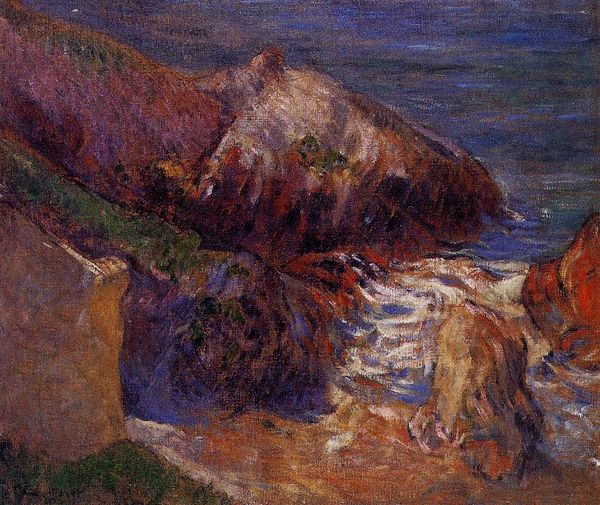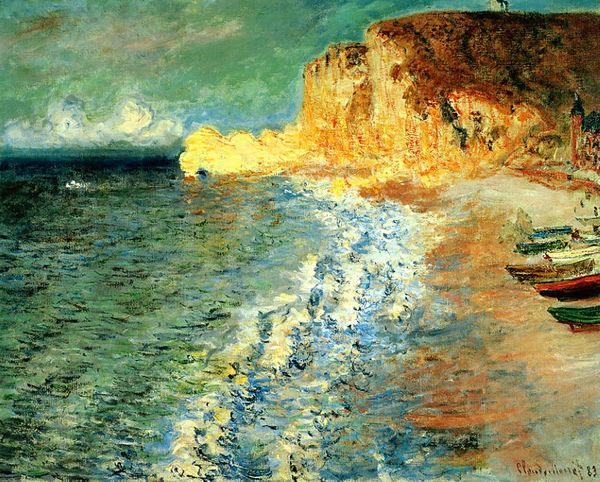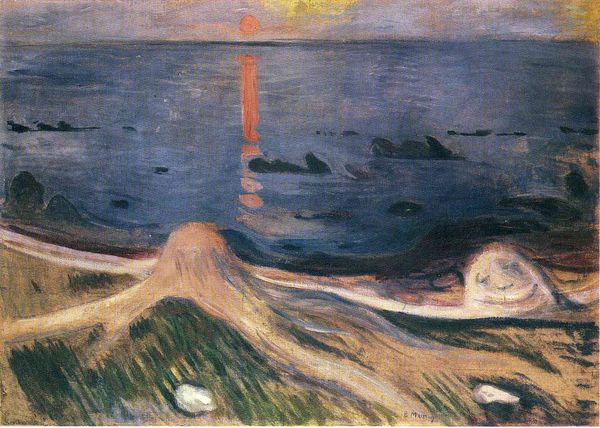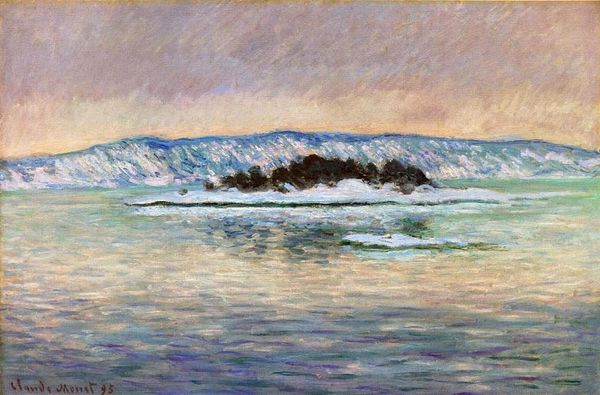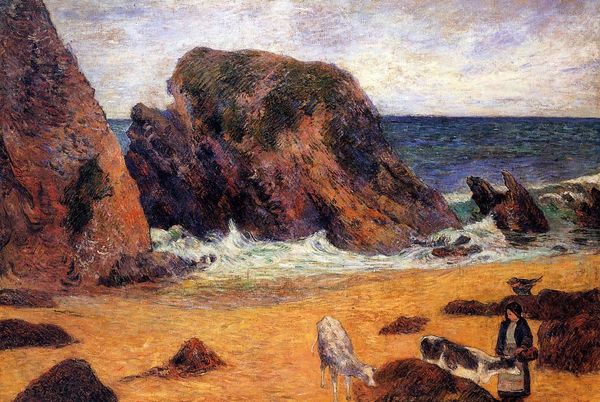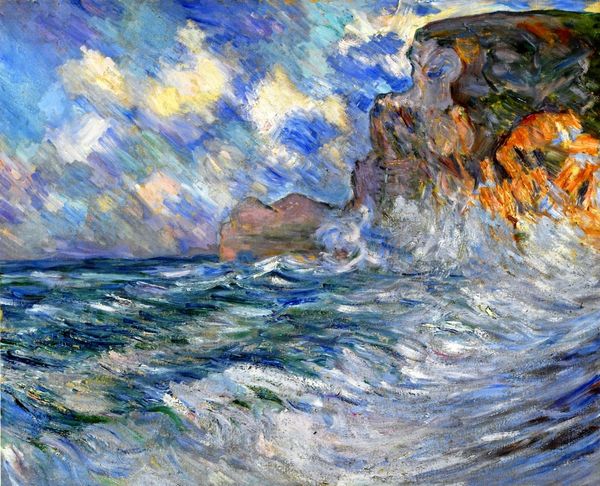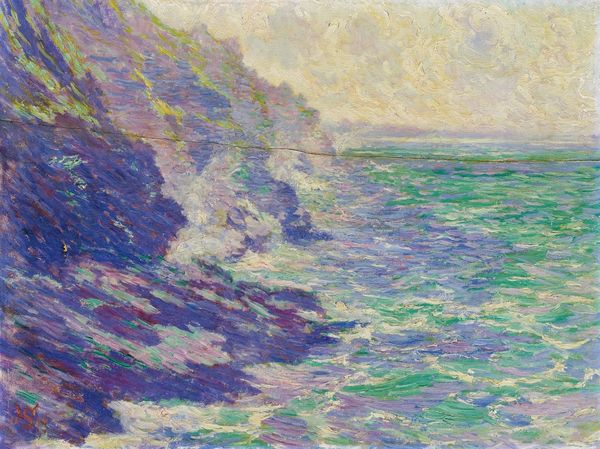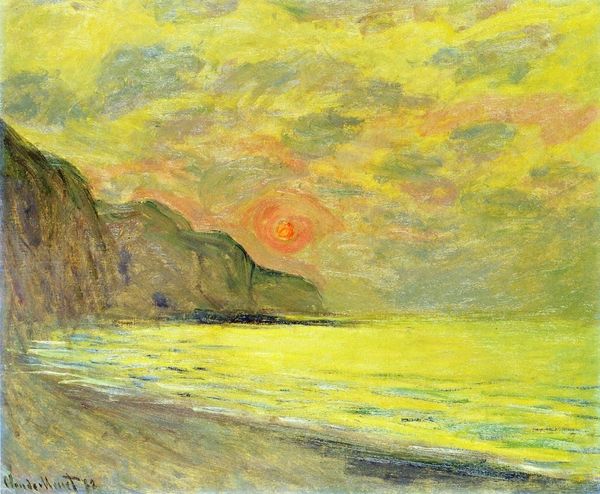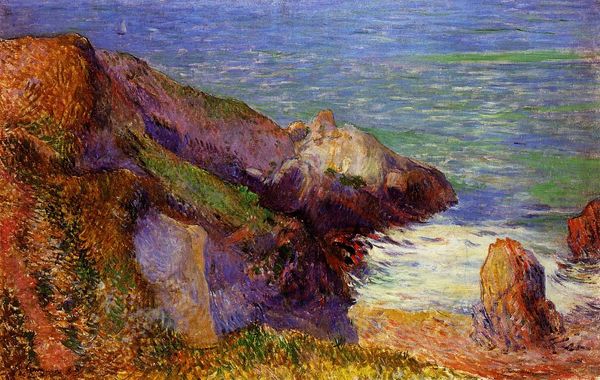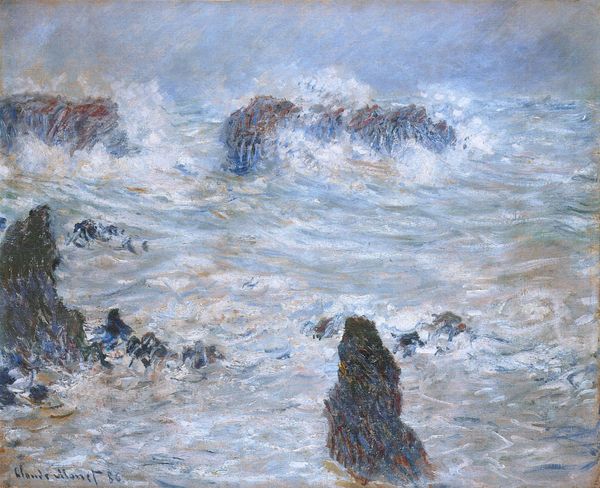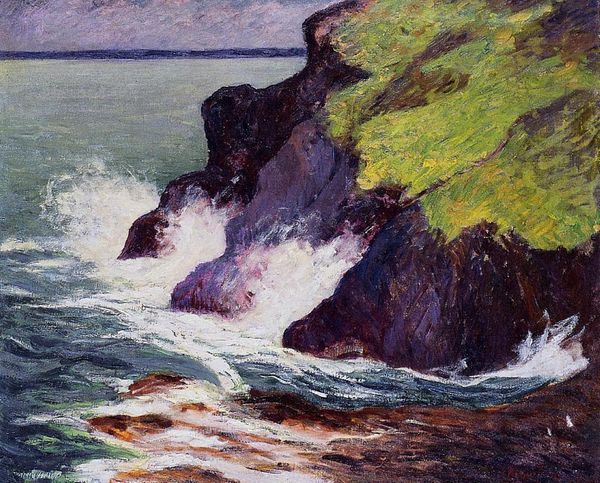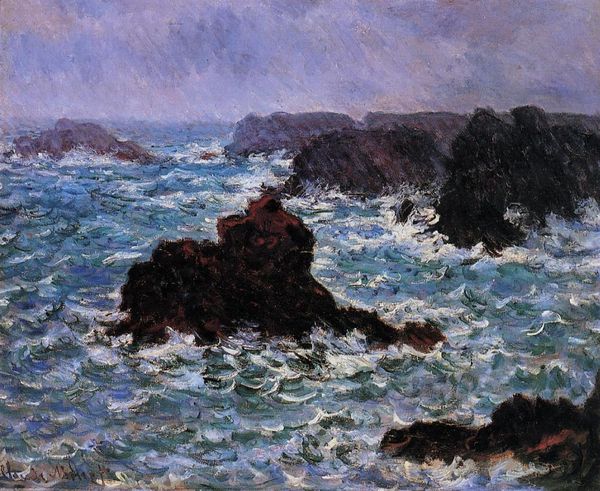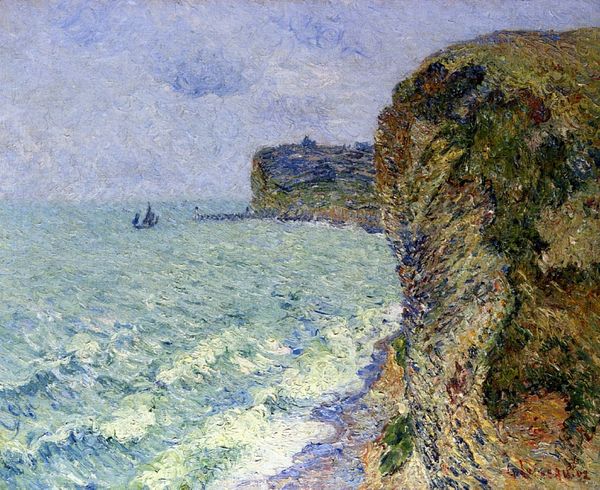
Copyright: Public domain
Curator: Look at those fierce rocks, daring the water! Editor: This is "The Wave," painted by Paul Gauguin in 1888. The location of this painting is currently a Private Collection. Curator: A very turbulent wave. It's quite the mood piece; feels like nature's letting off some steam. And is that… red sand? Gives the scene a bit of a surreal, theatrical punch. Editor: Gauguin's Breton period. Before Tahiti beckoned, he found Brittany plenty exotic enough, thank you very much. The locals considered it conservative at the time, yet the wave is undeniably raw in terms of colors, not very representative of Britanny. It’s interesting that the focus is more on the experience of nature than a true depiction. Curator: Experience indeed! The thick brushstrokes practically hurl the viewer into the scene. It feels more than just a seascape; it's a landscape of the soul, a tangible tempest within. You know? And are those bathers being thrown in the sea or what? What is going on with that orange part? Editor: Yes, the red earth on the cliff gives the picture depth, in a Post-Impressionistic style! Gauguin challenges conventions, offering a lens through which to perceive the inherent, symbolic emotions reflected in the land and figures. What looks like a traditional scene of recreation becomes something of a spiritual crucible! Curator: Crucible is right! It is really intense... Now I almost hear the roar of the sea in my ears... You see, those colors that someone would deem arbitrary - that intense vermillion is amazing. Did Brittany beaches truly have vermillion sands or cliffs at that time? Did they exist? Who knows, it gives such unique depth, don't you agree? And yet the whole is consistent and so energetic! Editor: Gauguin certainly took liberties with naturalism, reflecting a shift toward subjective expression and symbolic representation, so in short, he may have used artistics freedom when he represented the shores. It mirrors art trends questioning objective reality, opening an interpretive path to understand how cultural expression evolves over time and in society. The picture's lack of historical record makes it a powerful artifact nonetheless. Curator: The magic of art is sometimes to create a world that exists beyond fact. We build truths beyond record. Editor: Absolutely! In that sense, "The Wave" crashes far beyond its canvas and becomes timeless.
Comments
No comments
Be the first to comment and join the conversation on the ultimate creative platform.

